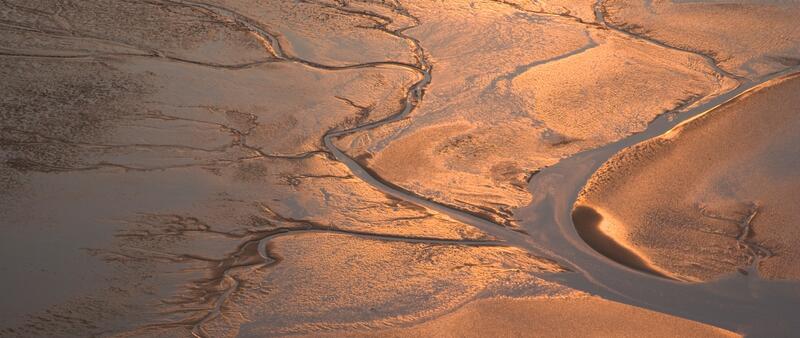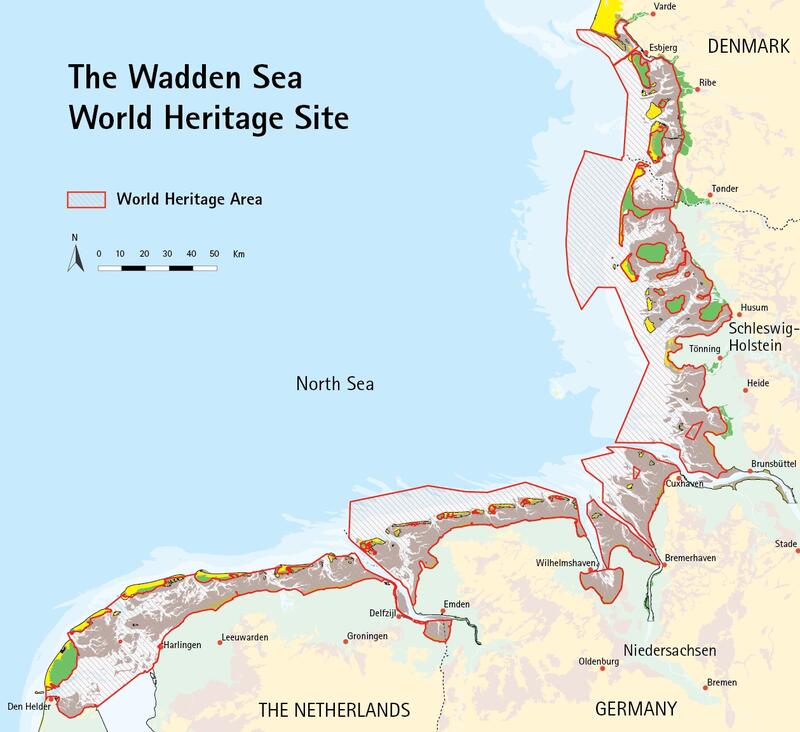One Wadden Sea. One Global Heritage.

The Wadden Sea World Heritage is the largest tidal flat system in the world, where natural processes proceed largely undisturbed. It encompasses almost the entire Wadden Sea in Denmark, Germany and the Netherlands: an area of nearly 11,500 square kilometres along a coastal strip of about 500 kilometres.
There are many other sedimentary coasts that, in one way or another, resemble the Wadden Sea in morphology such as the Mississippi River Delta, Banc d’Arguin or the Arctic Lena Delta. However, they differ in terms of climate, river influence, tides or waves. Many sites are also much smaller: The Wadden Sea alone comprises about 60 % of the intertidal area of the north-eastern Atlantic shores. In addition, the Wadden Sea is special in that almost all the sediments are supplied from the adjacent sea, with only a minor or local river influence. Salinity ranges mostly between 20 and 30 psu, which is less than in the open ocean (34) but more than in estuaries (0-20), where most other intertidal flats are found in Europe. Furthermore, the Wadden Sea is considered one of the most important areas for migratory birds in the world and global biodiversity relies on this site.

Area of the Wadden Sea World Heritage site. CWSS.
In 2009, the Wadden Sea was inscribed on UNESCO’s World Heritage List in recognition of the ‘Outstanding Universal Value’ of the area and the progress made in protecting and managing it for more than a generation. The World Heritage status is the highest possible award for a natural site in recognition and acknowledgement of its outstanding global importance. Thus, the Wadden Sea is on the same footing as other World Heritage properties such as the Great Barrier Reef and the Grand Canyon. The inscription into the World Heritage List means that the Wadden Sea carries outstanding universal value and must be preserved for the benefit of present and future generations.

